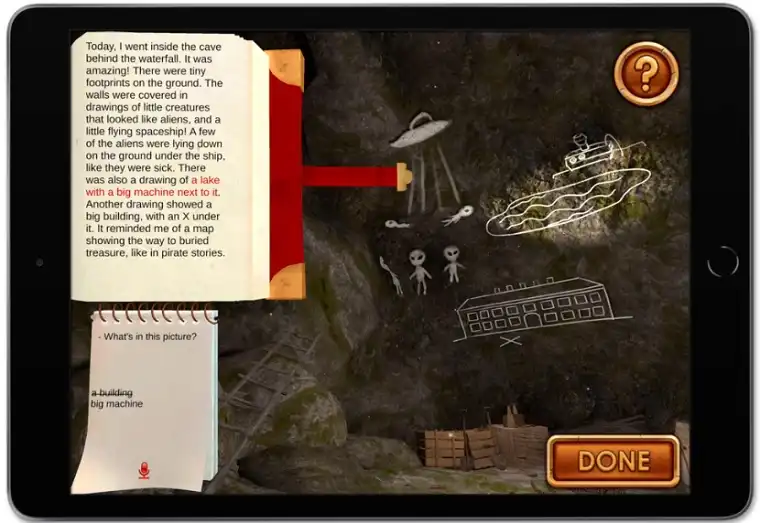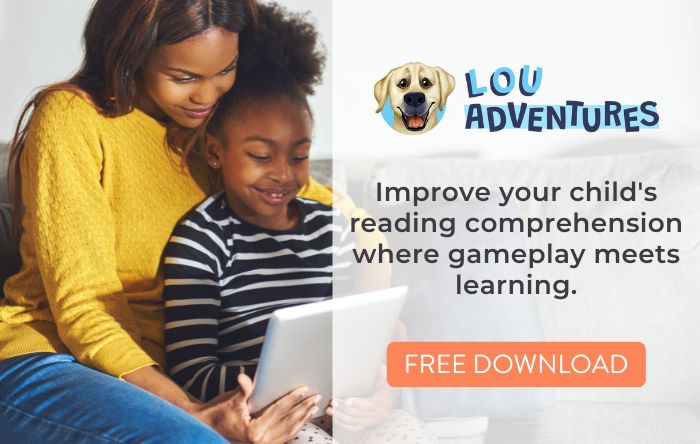There’s a worrying trend in the US right now where many kids struggle with reading comprehension. A growing number of children are unable to read at or above their grade level.
This can lead to a variety of problems, from falling behind in school to lower confidence and self-esteem.
Reading comprehension is an important part of learning and a key skill for academic success. It’s the ability to not only read words, but to also understand their meaning and how they are connected within a text or story.
Reading comprehension is an essential part of a child’s development. It helps them build knowledge, vocabulary, and analytical skills. Without it, children may struggle to keep up with their peers in the classroom. Poor reading comprehension can lead to low grades and difficulty understanding complex ideas or concepts.
Children become better readers and learners as they enhance their reading comprehension skills, and the good news is that there are lots of fun activities and strategies parents can use to help their children become better readers.
Building better literacy skills will only set them up for success in the future. So keep reading to learn more about why reading comprehension for kids is so important and to find out how you can help your child improve their reading skills!
Why is Reading Comprehension So Important?
Reading comprehension helps children become better readers and learners.
Through reading comprehension practice, children can learn to understand the context of a story and learn what role the characters play within the story.
As students understand the context of a story, they can also learn to relate their own emotions and stories to the original read.
Not only that, but reading comprehension also helps children build their vocabulary, which is essential for communication and understanding.
Reading comprehension encourages kids to think critically and make connections between different texts or stories.
It encourages them to evaluate what they’re reading, draw conclusions, ask questions, and develop a better understanding of the material. This can lead to more in-depth conversations and discussions with their peers, teachers, and family members.
Having a better understanding of what they read can help children make informed decisions in school and life.
Reading comprehension is also important for preparing kids to eventually transition into higher education or the workforce.
It helps them understand complex topics, think critically about information presented to them, and make connections between different ideas.
Improving reading comprehension with early intervention is key to helping children succeed in school and beyond.
So, how can you help your child improve their reading skills?
6 Tips for Improving Reading Comprehension for Kids
Need some tips on how to improve reading comprehension for kids? Check out the list below!
1. Read Often
One of the most important ways to boost reading comprehension skills is to read often. It is suggested that children read or be read to for at least 20 minutes each day. If you do not currently have your child in a reading routine, you can check out our guide to getting kids into a good reading routine.
You can add reading into your daily routines.
A common place for the reading routine is to have children read before bedtime. If you think that your child is too exhausted by the end of the day, you can implement a reading routine in the morning or afternoon.
The more children practice their reading routine, the more it becomes a regular part of the day. Leading by example is a powerful tool to help children fall in love with reading.
2. Use Apps and Other Resources to Make Reading Fun
 Lou Adventures: An Interactive Learning Story for Kids
Lou Adventures: An Interactive Learning Story for Kids
Lou Adventures is an interactive learning story for kids that helps them improve their reading skills through a fun, adventurous game.
There are a variety of different apps and resources that can help improve reading comprehension skills in a fun, engaging way.
Apps are a great break from your traditional book practice, and they can be done on-the-go.
Lou Adventures is an example of an interactive reading comprehension app that involves children in exciting mystery stories.
This free app provides students with a dog companion named Lou. He takes children on adventures to practice reading and reading comprehension. In the app, children answer questions verbally, and the app responds to their answers. Lou then guides them to use text from the story to solve missing pieces of the puzzle.
Our Lou Adventures review offers a full look at the app.
Click here to try Lou Adventures for free!
3. Read with a Purpose
When your child is reading, it is important they learn to read with a purpose. You can help guide your child through the reading time by choosing books they know well at first, asking questions, and re-reading.
When you begin to practice reading comprehension with your child, it is important to start small. Start with small reading samples and gradually increase to full stories. You can find many free printable worksheets online that contain short paragraphs and questions. Use these short/small worksheets first as a way to introduce reading comprehension. As your children master these shorter reads, you can move to longer stories. You can use questions that have been pre-written for you or you can make your own questions. These questions do not have to be complex at first. They can be simple recall questions. As children get better at reading and reading comprehension skills, your questions can become more specific to individual parts of the reading.
It is important to ask questions about the book while children are reading (either alone or with you). You can ask them about the action of a character. You can ask simple questions such as, ‘What color was his shirt?’. You can also ask children to predict what will happen next. These questions all help build reading comprehension skills.
If you haven’t formally practiced reading comprehension with your child, you can start with a story they know. You can read parts of the story together and then ask questions about the characters and storyline. Students are likely to know the answer, because they know the story so well. This is a good motivating activity to help introduce reading comprehension. Through this activity, children will become comfortable with questions during and after a story. They can also see how they already excel at some reading comprehension strategies, which is a great ego boost.
4. Let the Child Choose the Books
Children love taking ownership of their reading. One way you can help your child take ownership of their literacy learning is to let them choose the story topics and books that you will read. You do not have to let them choose every time, but letting them choose every so often will help increase their dedication. You can use any story to practice reading comprehension skills, even silly stories.
One way to implement this choice, for example, is to allow students to choose 1 story topic a week that they want to do their reading comprehension practice with. You can also choose a theme for each month, i.e.: January – Sports. Then you can find different short stories or books that align with this theme.
This simple action can help further engage students on their literacy journey.
5. Build on Your Progress
Some common reading comprehension activities include summarizing, character identification, predicting, and close reading. There are other activities, but we will focus on how to implement these four.
Summarizing is an important reading comprehension skill. Through summarizing, children recall the whole purpose of the story. They also include important characters and outcomes. Children will see ‘summarize’ questions in every subject and in almost every year of school. It’s great to practice summarizing early. You can have children practice summarizing by writing or verbally telling you key points from the story.
Character Identification is another important reading comprehension skill. Character identification helps children connect with the characters in the book. Children can focus on the types of characters and what their roles are within the story. You can have children practice identifying characters by verbally discussing them, making flashcards, writing sentences, or drawing character profiles.
Predicting is a skill that hones in on reading comprehension skills and creativity. When children make predictions, they are thinking into the future of the story. Children can practice predicting what happens next within a story. You can also have your child draw or write an alternate ending to a story.
Close Reading is a skill that can be practiced in many different ways. You need some tools to do close reading activities. These tools include markers, colored pencils, post-it notes, highlighters, stickers, etc. Your child (or you) can choose which you will use for each part of the close reading instructions.
While reading a story, have your child underline vocabulary words; circle words they do not know, and put a sticker next to important words or concepts. You can change up the instructions based on what you want your child to focus on. You can start with just one part of the instructions for younger readers.
Close reading activities will help your child focus on the words and concepts of a story. Close reading can be done with little short paragraph stories or entire chapters!
6. Trust the Process
Reading comprehension can seem like a big task to tackle, especially because we know how important it is in our everyday life.
Start small and then build on more activities and questions as you see your child making progress.
As your child gets used to the shorter stories, move to longer ones. Make sure to practice together each step of the way, even if you plan for your child to do most of the work individually. You should demonstrate your excitement and love for reading. It is best to lead by example. And don’t forget, make it fun!
Have any questions about reading comprehension? Feel free to reach out and ask. Have any helpful tips of your own on reading comprehension for kids? Share them below! We’d love to hear from you.


